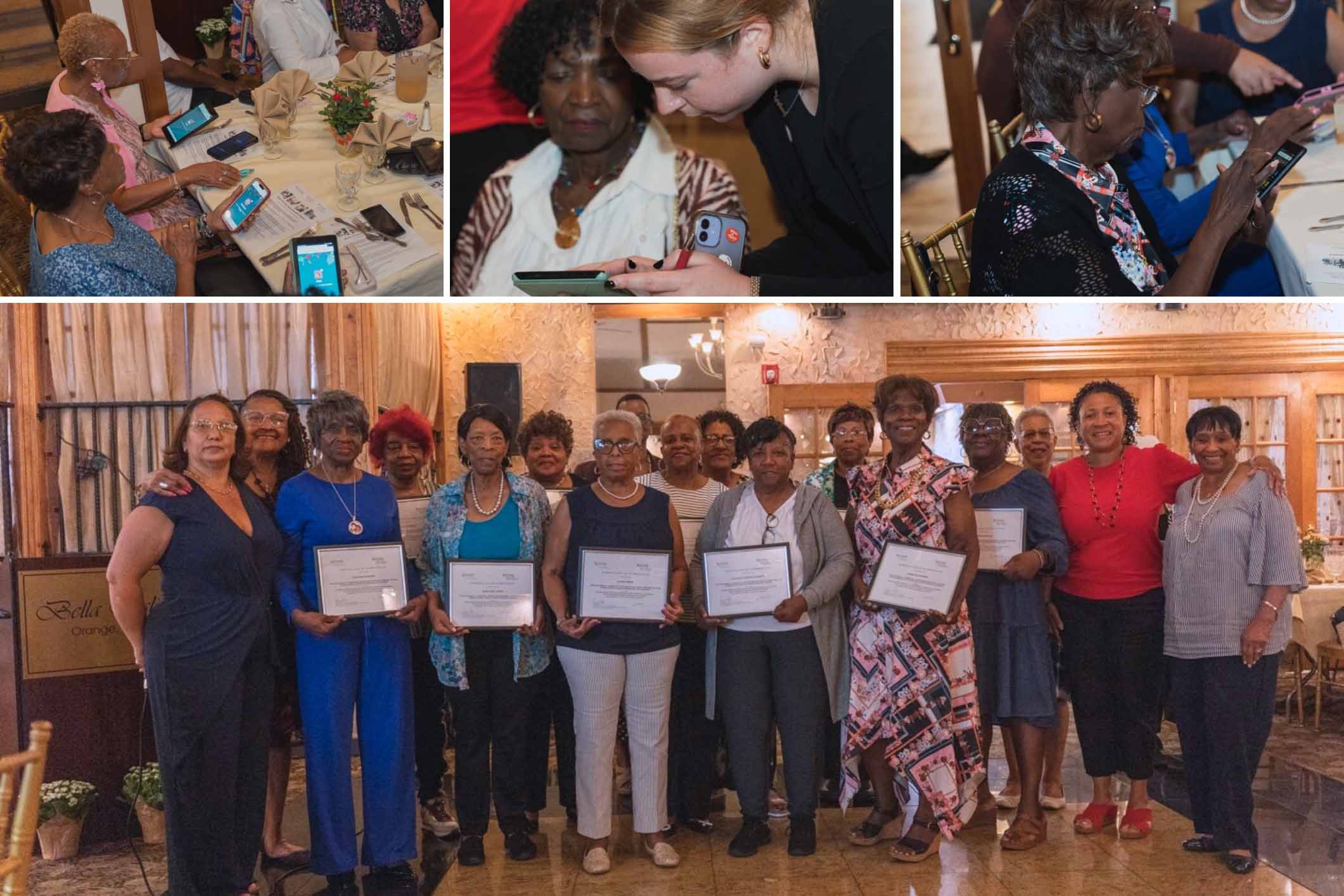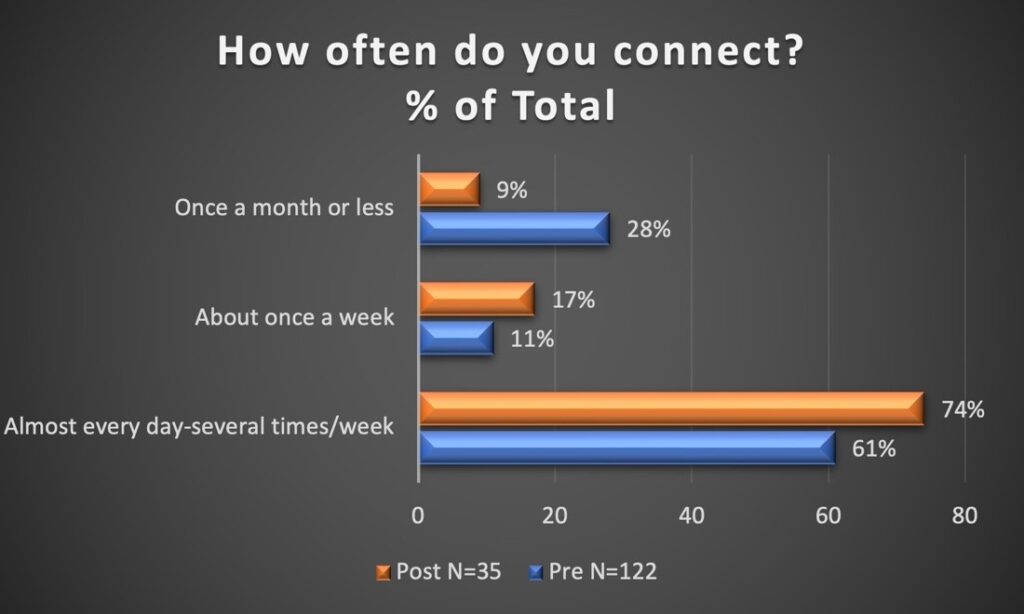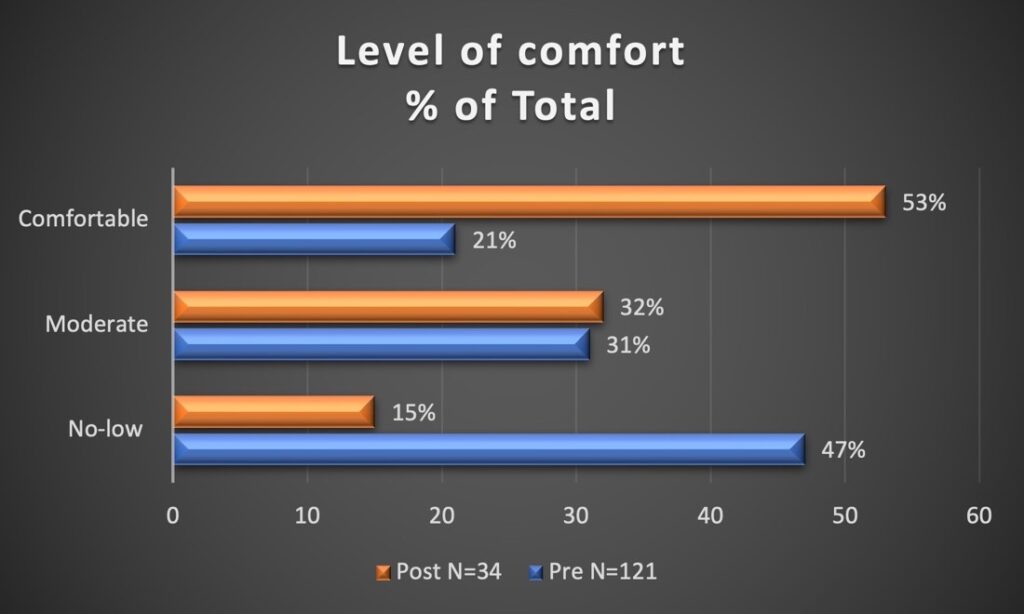
By Epiphany Munz, Donita Devance, and Diane Hill, Ph.D.
The Office of University-Community Partnerships/Center for Health Equity and Community Engagement (OUCP/CHECE) and Advocates for Healthy Living Initiative (AHLI) approach to keep older adults engaged and active using digital technology emphasizes community partnerships, participant feedback, and opportunities to recognize and celebrate achievement. In keeping with this philosophy, OUCP/CHECE/AHLI hosted the Senior Connect Digital Divide Participant Recognition on Wednesday, June 28. Participants and community partners joined in honoring their efforts, sharing findings from the pilot phase, and collecting new data and information to shape the program going forward. Importantly, the celebration was intended to encourage continued engagement, as this is known to be an important element of persistence among older adults.
Anonymous surveys collected at the event were compared to intake information and demonstrate the efficacy of the program model. Of the 39 participants who completed the short survey, almost three-quarters (74%) indicated that they connect to the internet “almost every day” or “several times a week” compared to just 61% of respondents at intake (August 2021-December 2022). In addition, the survey showed an increase from 11% to 17% of those who connect about once a week and a significant decrease (from 28% to 9%) of those who connect once a month or less.

Please use caution in interpreting differences where sample sizes are small. Additionally, please note that the survey instrument was being piloted here.
Equally encouraging was the number of participants who reported an increased level of comfort using internet-ready devices. More than half of the respondents (53%) indicated feeling comfortable compared to just 21% at intake. Conversely, only 15% reported either no comfort or low levels of comfort compared to 47% at intake.

Please use caution in interpreting differences where sample sizes are small. Additionally, please note that the survey instrument was being piloted here.
Just over one-third of survey respondents (35%) indicated they needed no assistance navigating the internet after the training, compared to one-fifth (20%) at intake. This finding, though encouraging, reinforces our belief that continuing education and supportive services are needed to promote increased efficiency in using digital technology and resources. Respondents indicated a high degree of interest in various options: refresher courses (75%), individual or small group coaching (88%), tech support via appointment (78%), “Senior Connect” internet-based training hub (87%), interactive practice sessions (93%), video library (76%), and training on other devices (88%).
These findings support both the efficacy of the training as well as the approach. The Senior Connect education initiative utilized two approaches in its research design and implementation. Following the Transdisciplinary Intergenerational Community Engagement Model (TICEM), the project development and implementation relied on community partnerships to better target communities and build sustainable models for digital technology adoption in older adults. TICEM’s 11 principles were integrated to promote community leadership. Additionally, several community partners participated in the Rutgers CIRTification training, a new human subjects research training option to provide core research ethics in lay language, to ensure effective community collaboration and safe research administration in all phases of the project. Upon completion, CIRTification allows individuals in community organizations to recruit research participants, obtain informed consent, and collect data. We consider these elements critical to the success of such community-focused interventions.
Our preliminary findings suggest that community partner involvement promotes adoption and use of digital technology among older adults, that they benefit significantly from digital skills and literacy training that is catered to their needs, and that they are more likely to continue using their devices if they are engaged by trusted community leadership. Previous research echoes the effectiveness of harnessing community partnerships to address the digital divide (Gallardo, et al. 2021). Thus, it is important to continue implementing such community-based participatory research models to ensure persistence and sustainable program development.
Resources:
Gallardo, R., Beaulieu, L. B., & Geideman, C. (2021). Digital inclusion and parity: Implications for community development. Community Development (Columbus, Ohio), 52(1), 4–21. https://doi.org/10.1080/15575330.2020.1830815
NJ ACTS 4 Us! CONNECT magazine (Issue #1, Fall 2021) https://go.rutgers.edu/NJACTS4Us-CONNECT
Perera, P., Selvanathan, S., Bandaralage, J. and Su, J.-J. (2023), “The impact of digital inequality in achieving sustainable development: a systematic literature review”, Equality, Diversity and Inclusion, Vol. ahead-of-print No. ahead-of-print. https://doi.org/10.1108/EDI-08-2022-0224
